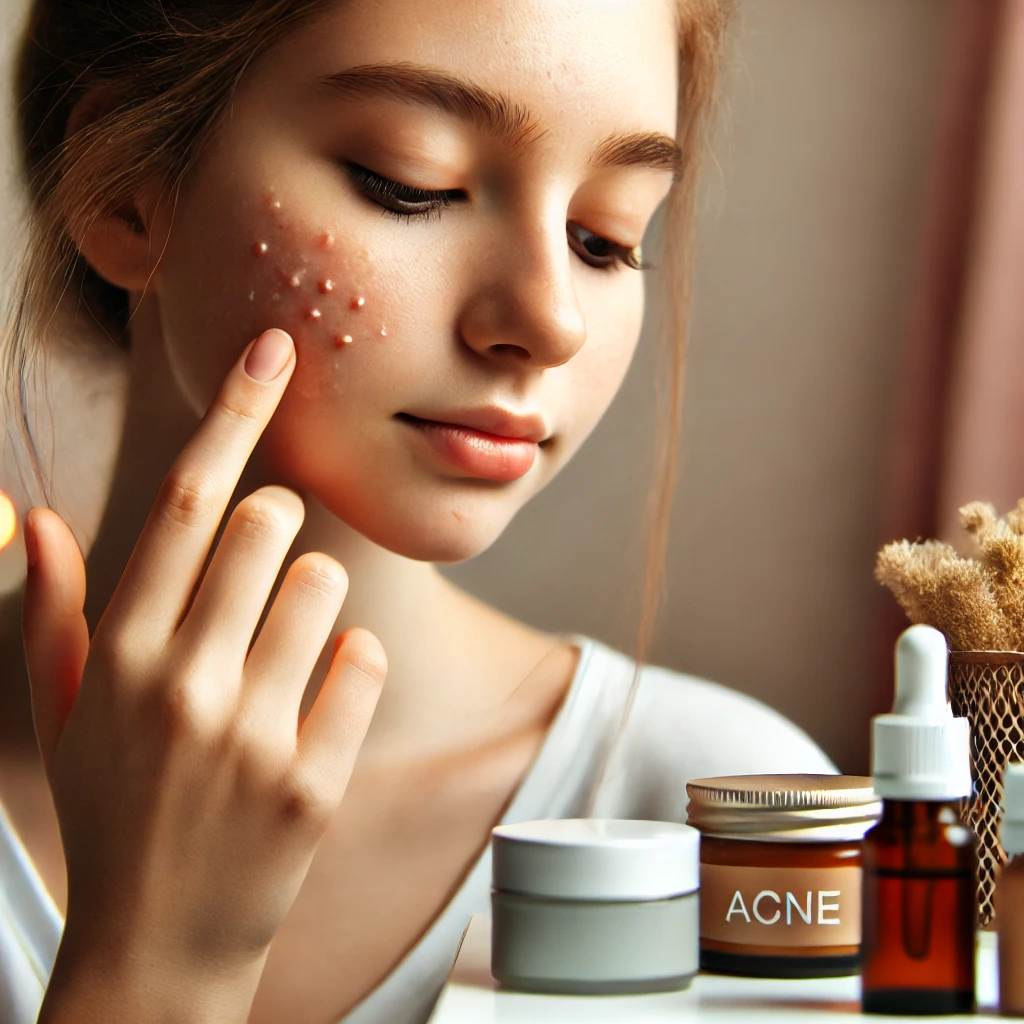Skin breakouts, characterized by pimples, blackheads, whiteheads, and other blemishes, are a common concern for many people. They can be caused by a variety of factors, including hormonal changes, diet, stress, and improper skin care. However, with the right approach, you can significantly reduce their frequency and severity. Here’s a detailed guide to help you prevent skin breakouts effectively.

Treatments for Active Breakouts
1. Understand Your Skin Type
Knowing your skin type is crucial in choosing the right skincare products and routine:
- Oily skin: Prone to acne and enlarged pores. Opt for oil-free and non-comedogenic products.
- Dry skin: Can get irritated easily, leading to breakouts. Focus on hydration.
- Combination skin: Features both oily and dry areas. Use balanced products.
- Sensitive skin: Easily reacts to harsh products. Choose hypoallergenic and fragrance-free options.
2. Adopt a Consistent Skincare Routine
A consistent routine tailored to your skin type can prevent breakouts:
- Cleanse Twice Daily: Use a gentle cleanser to remove dirt, oil, and makeup. Overwashing can strip your skin of natural oils, causing more oil production.
- Exfoliate Weekly: Use a chemical exfoliant (like salicylic acid or glycolic acid) to remove dead skin cells that clog pores.
- Moisturize: Even oily skin needs hydration. Choose lightweight, oil-free moisturizers.
- Use Sunscreen: Protect your skin from UV damage with a non-comedogenic sunscreen daily.
3. Maintain Healthy Habits
Your lifestyle greatly impacts your skin health:
- Hydrate: Drink at least 8 glasses of water daily to keep your skin hydrated and flush out toxins.
- Eat a Balanced Diet: Reduce intake of high-sugar and processed foods. Incorporate fruits, vegetables, whole grains, and omega-3 fatty acids.
- Manage Stress: Practice mindfulness, meditation, or yoga to reduce stress, which can trigger hormonal breakouts.
- Get Adequate Sleep: Aim for 7–8 hours of sleep per night to allow your skin to repair itself.
4. Avoid Touching Your Face
Frequent touching transfers bacteria and oils from your hands to your face, clogging pores. Refrain from picking at pimples, as this can lead to scarring and infections.
5. Keep Your Environment Clean
- Change Pillowcases Regularly: Oils and bacteria accumulate on pillowcases, contributing to breakouts.
- Clean Your Phone Screen: Wipe your phone daily to prevent bacteria from transferring to your skin.
- Use Clean Makeup Brushes: Wash them weekly to avoid bacterial buildup.
6. Be Selective with Skincare and Makeup Products
- Use non-comedogenic and oil-free products to prevent clogged pores.
- Avoid heavy, pore-clogging makeup, and always remove makeup before bed.
- Test new products on a small patch of skin to check for reactions.
7. Consider Professional Treatments
If home remedies and over-the-counter products aren’t effective, consult a dermatologist. They may recommend:
- Topical Retinoids: To reduce inflammation and clear pores.
- Prescription Medications: For severe acne cases.
- Chemical Peels or Facials: To rejuvenate and cleanse the skin.
- Laser Treatments: For stubborn acne or scarring.
8. Know Your Triggers
Identifying what causes your breakouts can help you prevent them:
- Hormonal Changes: Breakouts during your menstrual cycle or pregnancy are common. Talk to a dermatologist about hormonal treatments.
- Dietary Sensitivities: Certain foods like dairy or high-glycemic foods can worsen acne.
- Environmental Factors: Pollution, humidity, or harsh weather can aggravate your skin.
9. Use Targeted Treatments for Active Breakouts
If you do experience a breakout:
- Apply a spot treatment with benzoyl peroxide, salicylic acid, or tea tree oil.
- Use hydrocolloid patches to speed up healing.
- Avoid popping or squeezing pimples to reduce the risk of scarring.
10. Stay Patient and Consistent
Improving your skin’s health takes time. Avoid switching products frequently, as this can irritate your skin. Stick to a routine for at least 4–6 weeks to see noticeable results.
By incorporating these strategies into your daily routine, you can significantly reduce the frequency and severity of breakouts. Remember that everyone’s skin is different, so it may take some time to find what works best for you. If persistent breakouts continue to be a problem, consulting a dermatologist can provide you with a tailored treatment plan.
